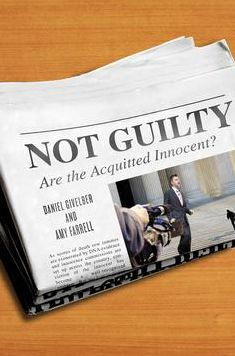5
1

Not Guilty: Are the Acquitted Innocent?
224
Not Guilty: Are the Acquitted Innocent?
224eBook
$35.49
$40.00
Save 11%
Current price is $35.49, Original price is $40. You Save 11%.
Related collections and offers
35.49
In Stock

Product Details
| ISBN-13: | 9780814744406 |
|---|---|
| Publisher: | New York University Press |
| Publication date: | 06/11/2012 |
| Sold by: | Barnes & Noble |
| Format: | eBook |
| Pages: | 224 |
| File size: | 19 MB |
| Note: | This product may take a few minutes to download. |
About the Author
What People are Saying About This
From the B&N Reads Blog
